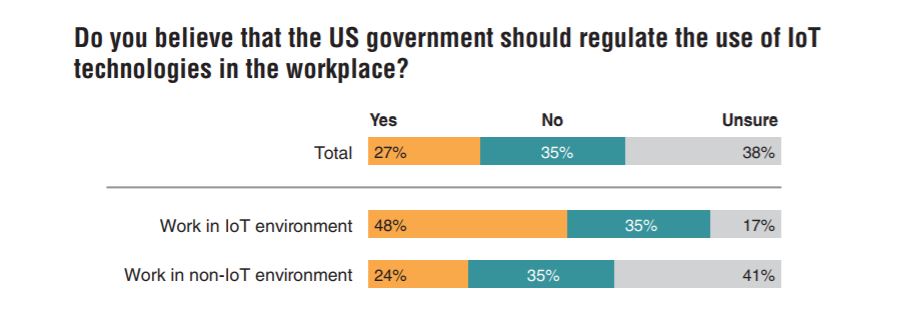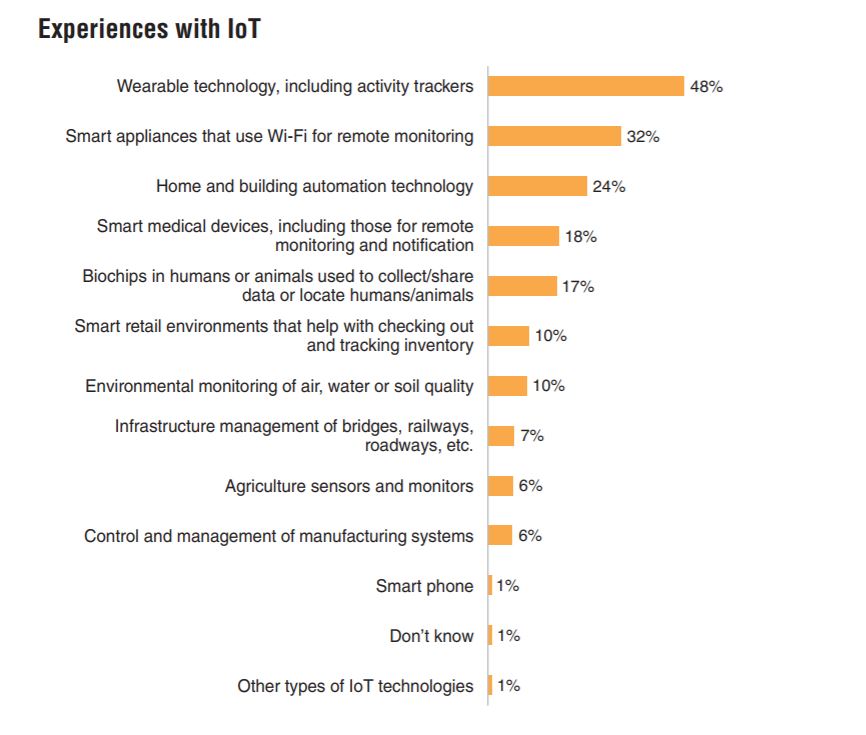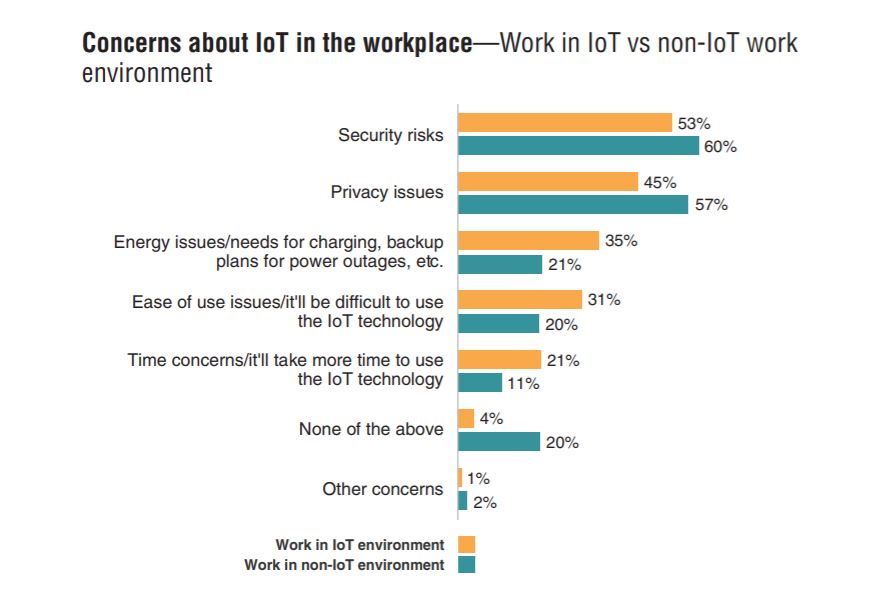US consumers want government to regulate IoT, fear for online security and privacy

A study of 1,000+ US adults offers an interesting glimpse into the state of the Internet of Things (IoT) and consumers’ view of the IoT landscape. It also delves into their fears and desires. For starters, most Americans agree that the government should play a key role in regulating the IoT environment.
Market Strategies International interviewed a national sample of 1,007 consumers aged 18 and older to gauge awareness of the kinks of the IoT marketplace. The intended purpose of the study was to identify differences in attitude and behavior between those who are familiar with the IoT world (dubbed the ‘Haves’) and those who aren’t (called the ‘Have Nots’), so vendors can better align marketing strategies with public perception of their products.
As mentioned above, one key finding was that most subjects felt the government had some responsibility to regulate the IoT landscape.

“We expected the Have Nots to agree that the US government should regulate IoT, given their limited understanding of and experience with IoT, but it was the exact opposite,” said Erin Leedy, senior vice president of the Technology Research division at Market Strategies. “Surprisingly, the Haves are twice as likely to agree that the US government should regulate IoT.”
Another important finding was how many people knew what IoT was versus how many hadn’t a clue. Asked if they were aware of a new category of connected technology called “the Internet of Things,” 70% said no and just 23% said they knew what the term described. The rest were unsure.
The study uncovered that not only do consumers lack awareness of IoT, but they’re poorly educated in IoT matters as well.
“When we asked consumers what they thought IoT was, we received a hodgepodge of interpretations, with no single definition standing out,” according to the report.
Sixteen percent said they believed all technologies that connect to the Internet are part of the IoT ecosystem. A similar percentage said it refers to anything that can send and receive data.
At the same time, many of these people are aware of and use connected devices daily. As many as 48% said they use or have used wearable technology, including activity trackers. One in three have experienced home and building automation technology.

It follows, then, that this emerging category of products faces a huge educational gap – something that needs to be fixed if vendors are to stay competitive.
However, another important data point out of this survey is worth mentioning – and this one is not so disconcerting:
Apparently between 53% (Haves) and 60% (Have Nots) are aware of the security risks plaguing IoT devices, both at home and at work. A similar percentage cited privacy issues as well, indicating that, although customers lack a clear grasp of the technicalities behind IoT, they are instinctively skeptical of their safety.

That’s good news for IoT security products like Bitdefender BOX. Currently in its second generation, BOX is a security hub for all your Internet-connected gizmos, at home, and even on the go.
“We believe these workers have already seen the massive potential of the IoT and recognize that the risks—data security, privacy and environmental—are very real and merit the government getting involved to set some guardrails,” Leedy added.
The Haves were also significantly more interested in emerging IoT technologies, and therefore are expected to act as a driver of demand for such products in the future.
The study concluded that IoT vendors have a huge incentive to bridge these educational gaps sooner rather than later, since an IoT-literate public is more likely to advocate for their products – and, of course, buy them.
tags
Author
Filip has 15 years of experience in technology journalism. In recent years, he has turned his focus to cybersecurity in his role as Information Security Analyst at Bitdefender.
View all postsRight now Top posts
How to Protect Your WhatsApp from Hackers and Scammers – 8 Key Settings and Best Practices
April 03, 2025
Outpacing Cyberthreats: Bitdefender Together with Scuderia Ferrari HP in 2025
March 12, 2025
Streamjacking Scams On YouTube Leverage CS2 Pro Player Championships to Defraud Gamers
February 20, 2025
How to Identify and Protect Yourself from Gaming Laptop Scams
February 11, 2025
FOLLOW US ON SOCIAL MEDIA
You might also like
Bookmarks








